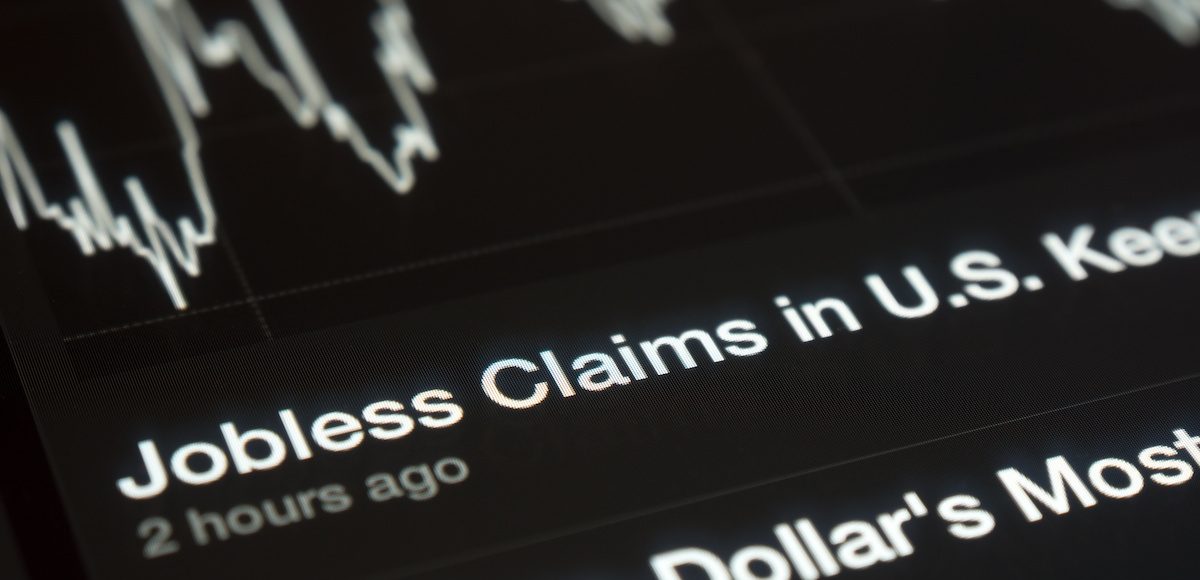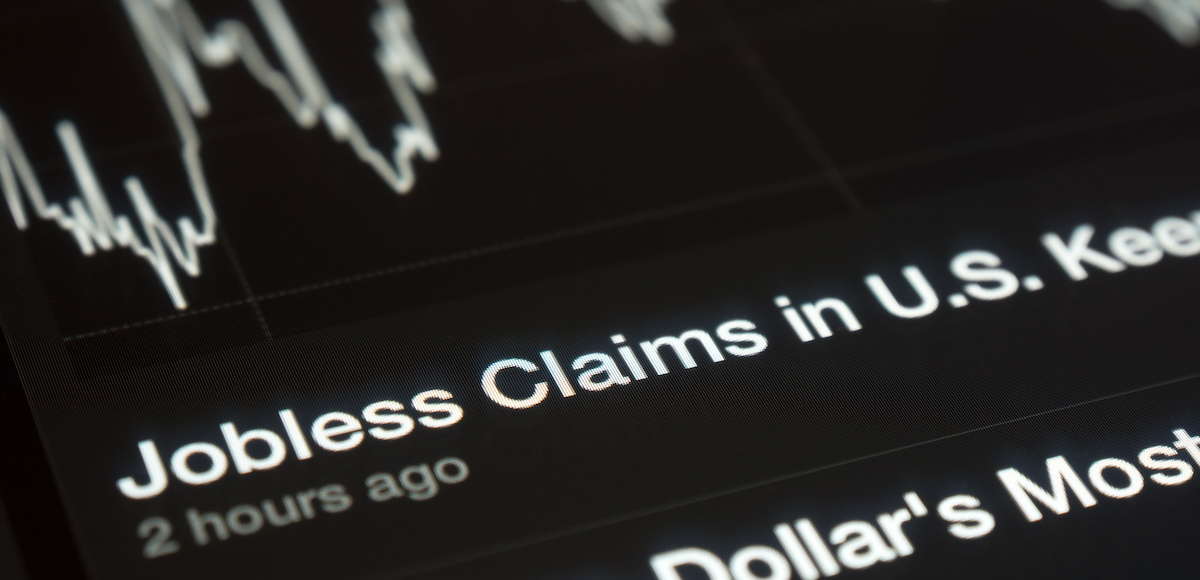

U.S. jobless claims graph on a tablet screen.
The Labor Department (DOL) said initial jobless claims were unchanged at a seasonally adjusted 211,000 for the week ending May 5, beating the 220,000 median forecast. The 4-week moving came in at 216,000, a decline of 5,500 from the previous week’s unrevised average of 221,500.
This is the lowest level for this average since December 20, 1969 when it was 214,500. Last week, the 4-week average fell to the lowest level since March 1973 and the Employment Situation revealed the unemployment rate fell to 3.9%, the lowest level since 2000.
The advance seasonally adjusted insured unemployment rate for the week ending April 28 was 1.3%, a gain of 0.1% from the previous week’s unrevised rate. The advance number for seasonally adjusted insured unemployment during the week ending April 28 was 1,790,000, an increase of 30,000 from the previous week’s revised level.
The previous week’s level was revised up 4,000 from 1,756,000 to 1,760,000.
The 4-week moving average was 1,812,500, a decrease of 22,000 from the previous week’s revised average. This is the lowest level for this average since December 29, 1973 when it was 1,784,250
Claims taking procedures in Puerto Rico and in the Virgin Islands have still not returned to normal. Extended benefits were payable in the Virgin Islands during the week ending April 21.
The highest insured unemployment rates in the week ending April 21 were in Alaska (3.0), the Virgin Islands (2.9), Connecticut (2.3), New Jersey (2.2), Puerto Rico (2.1), Rhode Island (2.1), California (2.0), Illinois (1.8), Pennsylvania (1.8), Massachusetts (1.7), and Minnesota (1.7).
The largest increases in initial claims for the week ending April 28 were in Wisconsin (+519), Arkansas (+485), New Hampshire (+364), Tennessee (+302), and Louisiana (+282), while the largest decreases were in Massachusetts (-3,917), Rhode Island (-1,980), Pennsylvania (-1,536), Arizona (-1,471), and Connecticut (-1,109).






L / May 10, 2018
Let me know when that statistic is accurate in California.
/